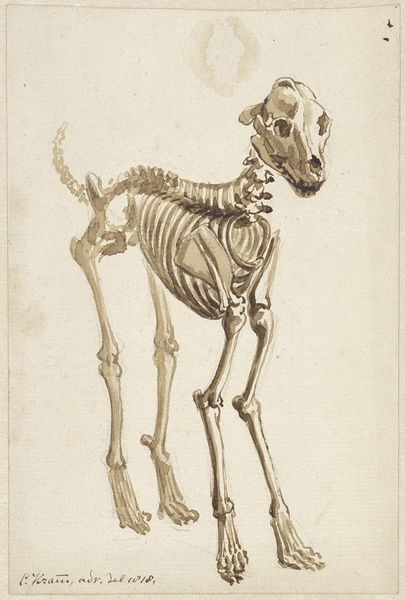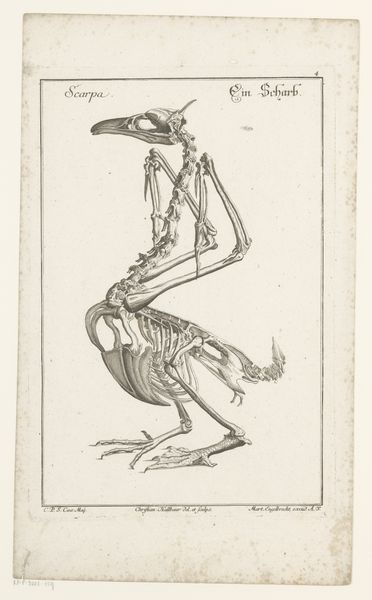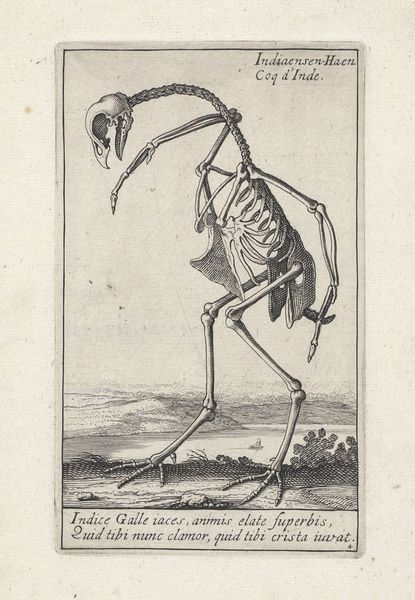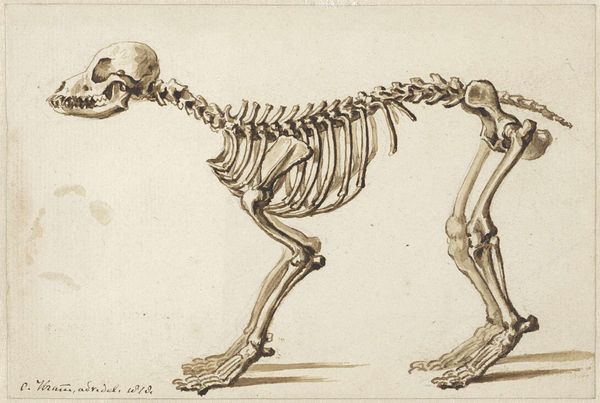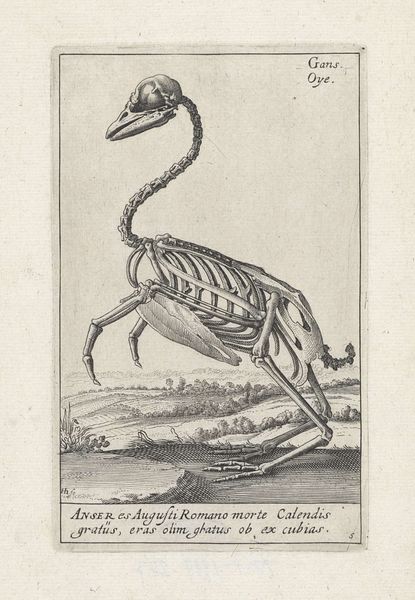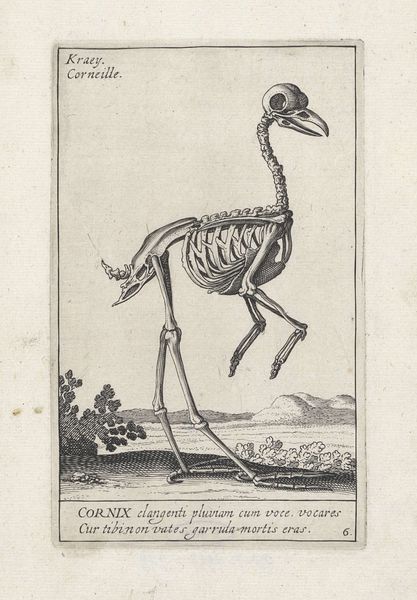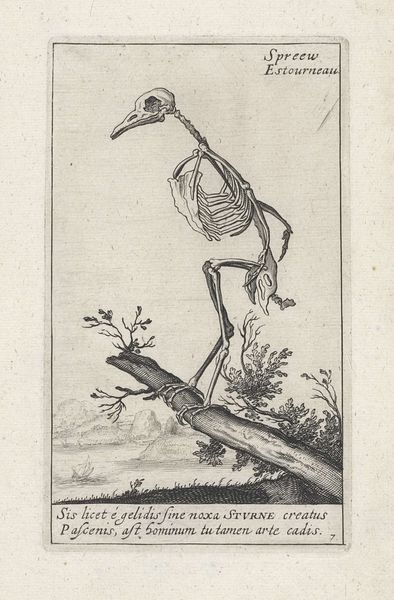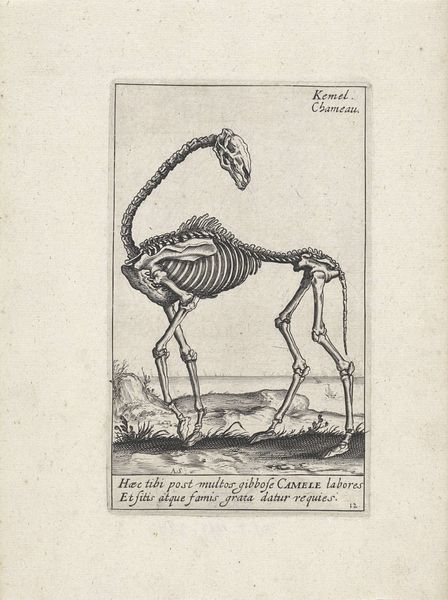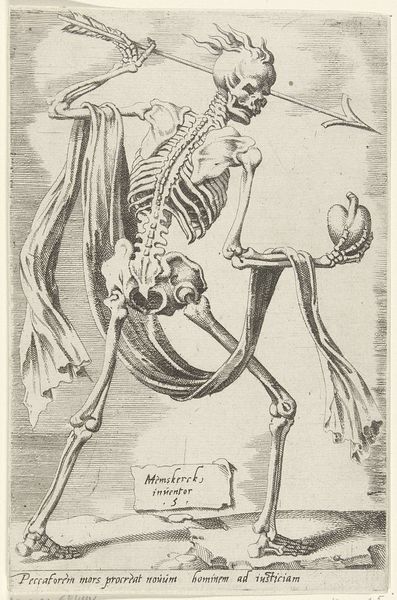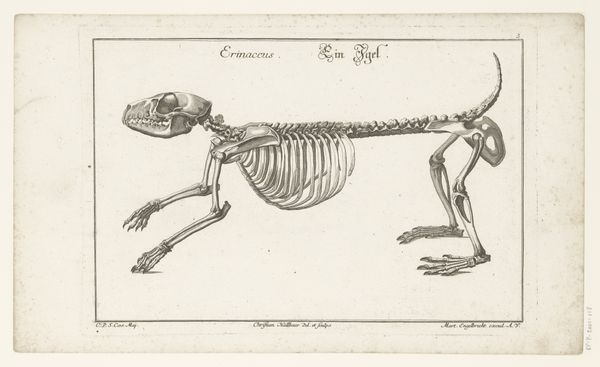
drawing, ink, wash
#
drawing
#
animal
#
pencil sketch
#
ink
#
pen-ink sketch
#
wash
#
academic-art
#
realism
Dimensions: height 174 mm, width 116 mm
Copyright: Rijks Museum: Open Domain
Editor: This is Christiaan Kramm's "Skeleton of a Dog, From the Back," made around 1818 using ink, pen, wash, and pencil. The first thing that strikes me is its delicate yet scientific feel. What aspects of its making do you find most compelling? Curator: What’s crucial here is understanding the labor and process involved in producing this anatomical study. Consider the deliberate act of rendering bone structure with such detail. How does this manual reproduction challenge our notions of artistic skill versus scientific documentation? Editor: It’s interesting to think about it in terms of labor. I hadn’t considered that. Are you suggesting this blurs the lines between art and…craft, maybe? Curator: Precisely! And beyond craft, the very act of dissection, the sourcing of materials—animal remains in this case—speaks to a complex relationship with both scientific inquiry and social consumption. Who was Kramm, what were the resources available to him, and how does this work reflect broader socio-economic contexts of his time? What did "realism" signify at this historical juncture? Editor: That makes me see the drawing as a kind of historical artifact now, not just an artwork. Curator: Exactly! It encourages us to question traditional hierarchies separating "high art" from practical activities like scientific study or anatomical drawing. It challenges us to think of the material realities behind art. Editor: So, it’s not just *what* is depicted but *how* and *why* it was made that matters? Curator: Yes, focusing on materials and production opens the door to understanding art's embeddedness in the broader material culture. Editor: I definitely have a new perspective on what to look for. Thank you for enlightening me. Curator: And I, you! This close examination reinforces the power of the materialist approach.
Comments
No comments
Be the first to comment and join the conversation on the ultimate creative platform.
